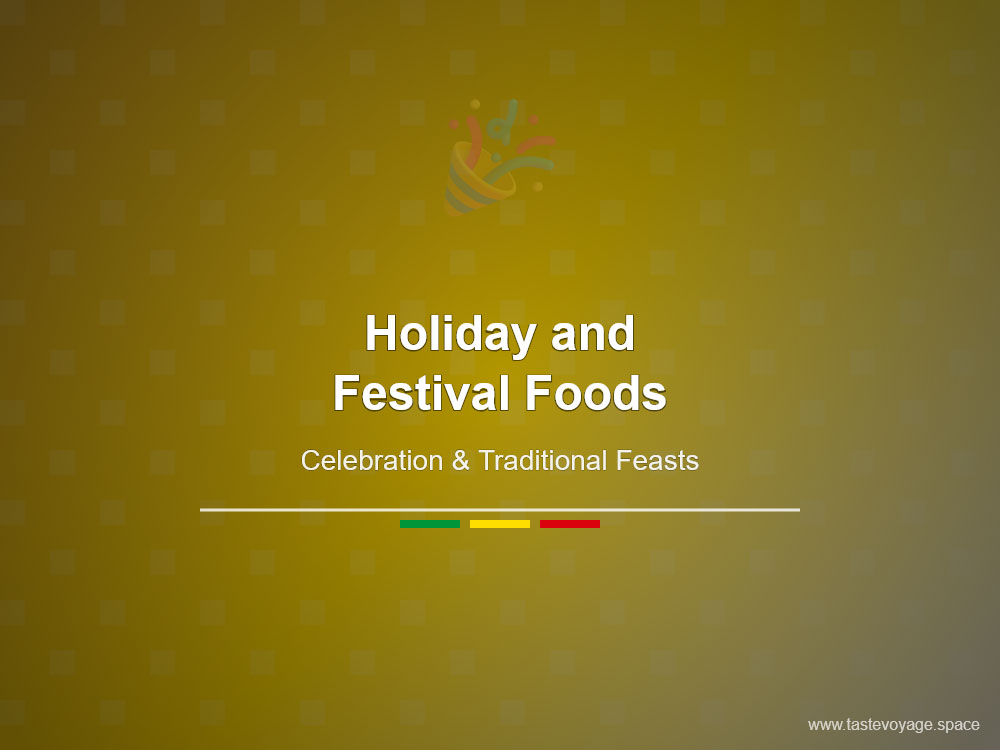Ethiopian Christmas Food Guide: Celebrate with Traditional Dishes
Travel the World Through Food >> Ethiopian Cuisine>>Holiday and Festival Foods>> Ethiopian Christmas Food Guide: Celebrate with Traditional Dishes
Ethiopian Christmas Food Guide: Celebrate with Traditional Dishes
Ethiopian Christmas Celebration Food Guide
Ethiopian Christmas, known locally as Ganna, is a time of joy, community, and deep cultural traditions. Central to this festive season is the remarkable array of foods that reflect Ethiopia’s rich culinary heritage. The dishes served during this celebration are not only delicious but also carry profound cultural significance, embodying themes of unity, gratitude, and spiritual reflection.
Cultural Significance of Ethiopian Christmas Foods
Ethiopian Christmas foods are more than just a feast—they are a reflection of the nation’s history, beliefs, and social bonds. The celebration usually occurs on January 7th, following the Ethiopian Orthodox Tewahedo Church’s calendar. During Ganna, families gather to mark the birth of Christ, and sharing food becomes an act of devotion and community.
Traditional dishes served during this time are prepared with reverence and often follow specific religious guidelines. Many foods are vegetarian or vegan, resonating with the church’s fasting traditions leading up to Christmas. These meals symbolize purity, renewal, and the spiritual journey of the Ethiopian people.
The act of sharing traditional dishes strengthens familial and community ties. It’s a time when stories are exchanged over the dining table, and the aroma of special ingredients fills homes with warmth and anticipation.
Culinary Significance and Iconic Dishes
Ethiopian Cuisine boasts a unique flavor profile characterized by the use of berbere spice mix, injera (a sourdough flatbread), and an array of flavorful stews known as wot. During Christmas, the menu often features these staples, prepared in festive variations.
One of the most iconic dishes is Doro Wat, a spicy chicken stew slow-cooked with hard-boiled eggs and berbere spice, symbolizing warmth and vitality. It is typically served atop injera, allowing diners to scoop up the rich, flavorful sauce with each bite.
Another key dish is Siga Wat, a beef stew seasoned with spices that evoke comfort and tradition. The hearty, slow-cooked nature of these stews underscores patience and care, reflecting the spiritual mindfulness of the season.
Vegetarian options also take center stage during the holiday. Shiro, a chickpea or lentil-based stew, offers a savory and hearty vegetarian alternative. Its preparation aligns with the fasting customs, emphasizing simplicity and purity.
Finally, a variety of salads, roasted vegetables, and enjera-based dishes complement the main courses, creating a vibrant and inviting feast that showcases Ethiopia’s culinary diversity.
Celebratory Traditions and Food Customs
The presentation and sharing of these dishes are integral to the celebration. Families often gather around large communal tables, sharing dishes family-style to symbolize unity. The meal is not just nourishment but a ritual that reinforces bonds and cultural identity.
In addition to the food itself, the preparation and presentation hold great importance. Traditional recipes are passed down through generations, preserving the culinary heritage and reinforcing cultural continuity.
Conclusion
Ethiopian Christmas celebration foods are a testament to the country’s rich cultural tapestry. They carry deep spiritual and social meaning, serving as a bridge between generations and communities. These dishes celebrate Ethiopia’s unique culinary identity—full of bold flavors, history, and tradition. As you explore these foods, you embrace more than just a festive meal; you experience a vibrant tradition rooted in faith, community, and cultural pride.
